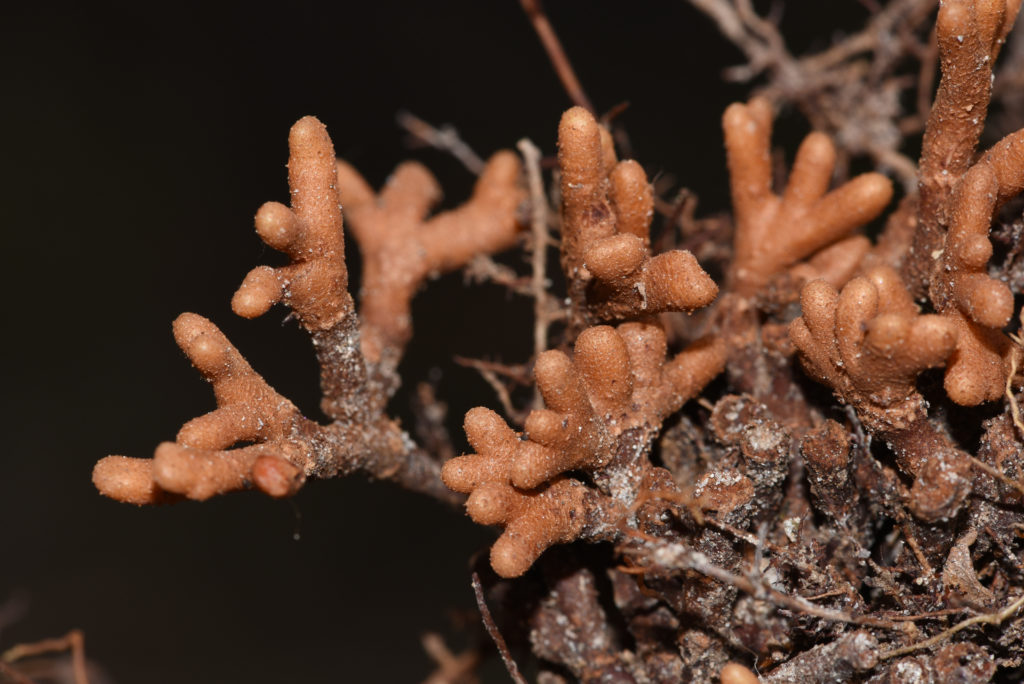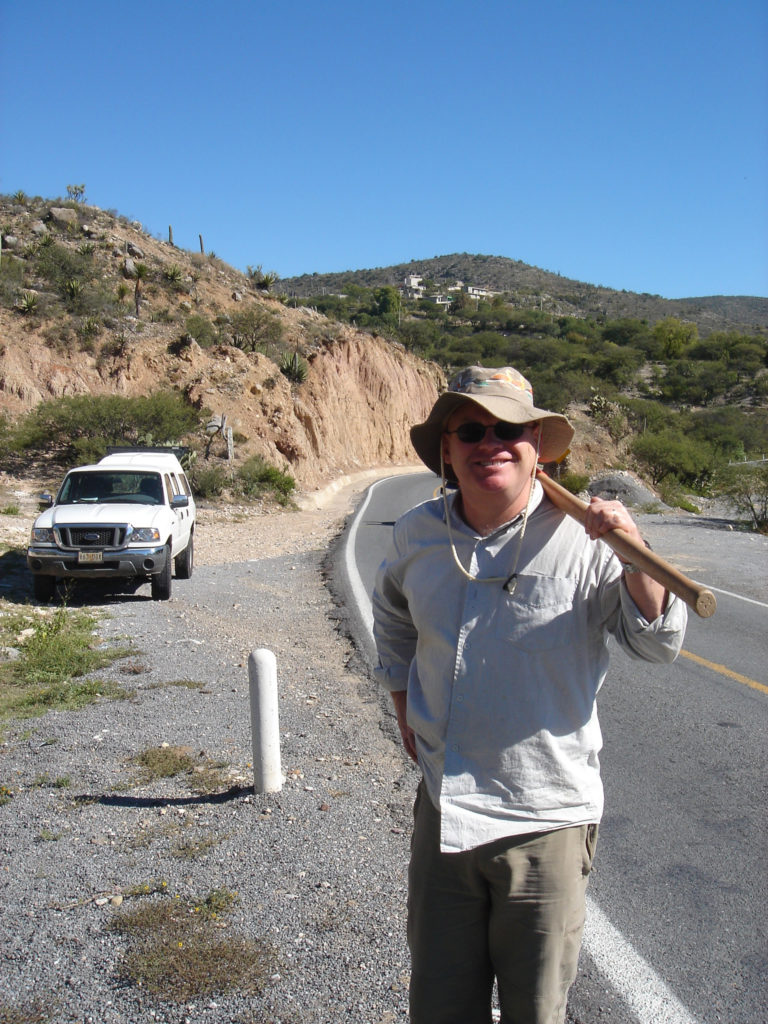Exploiting plant symbioses is the key to sustainable agriculture.
Euan James is a plant and microbial scientist specialising in root-nodulating symbiotic interactions between (mainly) legumes and soil bacteria called rhizobia that “fix” atmospheric Nitrogen (N) gas into forms that the plant can use for its growth. These symbioses, in which the legume houses the rhizobia in structures on their roots called nodules, provide the host plant with all its N requirements, and thus allow these plants to colonize soils that are depleted in this most essential of plant nutrients.

In addition to their ecological importance, many legumes, such as pea, beans, soybeans, clover etc., are of enormous agricultural significance, with their high-protein seeds being used for both human and animal consumption. Their ability to fix their own N means that no addition of N-containing fertiliser is required for their cultivation. “This is an essential attribute for sustainable agriculture, not just economically, but also in terms of mitigation against pollution resulting from the massive overuse of agricultural fertilizer over the last 50 years,” Euan says. “This overuse has resulted in the current “Nitrogen Crisis” in which waterways, groundwater, and even coastal ecosystems are polluted by harmful nitrates, and is also partly responsible for the enormous greenhouse gas (especially nitrous oxides) emissions that are produced by agriculture in the Global North. This can only be tackled by reducing our over-reliance on fertilisers; the efficient exploitation of N-fixing legumes is key to this endeavour.”
Nitrogen-fixing symbioses: diverse and ubiquitous
Euan first acquired a strong interest in how agriculture impacts the environment while studying Agricultural and Environmental Science at the University of Newcastle upon Tyne, during which he also caught the fieldwork “bug”. He then moved further north to Dundee where he did his PhD in the lab of the celebrated legume expert, Professor Janet Sprent, who has been (and still continues to be!) a major inspiration to him throughout his career.
Shortly after he obtained his PhD – on how oxygen regulates N-fixation in legume nodules – Euan started working in Brazil as a World Bank-funded consultant, and thus began a career focused on the enormous diversity of N-fixing symbioses in the c. 15,000 legumes that are known to nodulate globally. “Working closely with Brazilian researchers and seeing how transformative N-fixation could be in tropical agriculture was a real eye-opener and convinced me that what could work in the tropics could also work for us in temperate cropping regions, albeit with different plants, of course!” he says.

Euan’s experiences in Brazil, Philippines, Mexico and elsewhere also demonstrated to him that legumes had a value beyond agriculture, as they are such integral parts of their native environments, be they rainforests, swamplands or savannas, providing numerous ecosystem services such as soil enrichment, carbon-sequestration, pollinator rewards, food and shelter for fauna, and encouraging microbial diversity. Fieldwork in the Brazilian Cerrado, Pantanal, and Amazon rainforest, not only revealed to him the sheer diversity of legume symbioses, but also how fragile they and other components of these increasingly threatened ecosystems are: “It’s only by cataloguing and describing this incredible diversity that we can convince the public and policy makers that it has intrinsic value, and that it must be preserved for future generations,” he emphasizes.
Legumes for agriculture, human nutrition, and biodiversity
In the Global South, N-fixing “pulses” are the main sources of dietary protein, resulting in a truly sustainable source of dietary protein; we have much to learn from these societies. Much of Euan’s work at the James Hutton Institute is aimed at exploiting legume symbioses, particularly those of pulses like beans and peas, but it has wider implications in terms of the health and well-being of Scotland’s population. “Increased cropping of N-fixing legumes is essential for: (1) genuinely sustainable agriculture with lowered chemical fertiliser applications, reducing pollution of groundwaters by nitrates and NOx greenhouse gas emissions; (2) reversing catastrophic soil losses in Scotland’s arable farmland by reducing fertiliser applications in “conservation agriculture”; (3) avoiding further habitat destruction overseas (e.g., the Cerrado and Amazonia) by replacing imported soya with locally grown faba beans for food and animal feed; and (4) widening crop diversity and hence improving the resilience of Scotland’s food security in the face of climate change,” Euan says.
Agriculture is obviously of extreme importance, but climate change also poses great threats to native Scottish legume biodiversity, which includes some of the rarest plants in the British Isles, the alpine milk vetches, Astragalus alpinus and Oxytropis species. Working with colleagues at the Royal Botanic Garden Edinburgh, Euan is helping maintain Scotland’s natural capital by conducting research into the ecology of these N-fixing “Ice Age relic” plants which hang on precariously in their mountain habitats in the face of increasingly warmer winters.
Dr Euan James is a Research Leader in the Department of Ecological Sciences at the James Hutton Institute and Professor Visitante of the Depto do Solos at Universidade Federal do Rio de Janeiro (UFRRJ), Brazil. His work is supported by the Scottish Government’s Strategic Research Programme, the Bill & Melinda Gates Foundation, CAPES, and the European Union through the Horizon 2020 programme. Find out more here.
This post is part of a series showcasing Scotland’s innovative, high-impact research supporting biodiversity conservation, in partnership with Scottish Government and NatureScot. Read the rest of the series here.
Further reading
James, E.K., et al. 2001. Flooding-tolerant legume symbioses from the Brazilian Pantanal. New Phytologist 150: 723—738. https://doi.org/10.1046/j.1469-8137.2001.00126.x
Dos Reis Junior, F.B., et al. 2010. New Phytologist 186: 934—946. https://doi.org/10.1111/j.1469-8137.2010.03267.x
Madsen, L.H., et al. 2010. The molecular network governing nodule organogenesis and infection in the model legume Lotus japonicus. Nature Communications 1: 10 https://doi.org/10.1038/ncomms1009
Gyaneshwar, P., et al. 2011. Legume-nodulating betaproteobacteria: diversity, host range and future prospects. Molecular Plant-Microbe Interactions 24: 1276–1288. https://doi.org/10.1094/MPMI-06-11-0172
Sprent, J.I., et al. 2017. Biogeography of nodulated legumes and their nitrogen fixing symbionts. New Phytologist 215: 40—56. https://doi.org/10.1111/nph.14474
De Faria, S.M., et al. 2022. The innovation of the symbiosome has enhanced the evolutionary stability of nitrogen fixation in legumes. New Phytologist 235: 2365—2377. https://doi.org/10.1111/nph.18321
James, E.K. 2022. The seeds of nodulation. Journal of Plant Physiology 278: 153812 https://doi.org/10.1016/j.jplph.2022.153812
Maluk, M., et al. 2022. Fields with no recent legume cultivation have sufficient nitrogen-fixing rhizobia for crops of faba bean (Vicia faba L.). Plant and Soil 452: 365—368. https://doi.org/10.1007/s11104-021-05246-8
